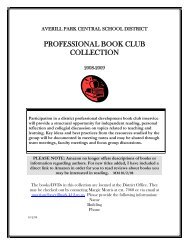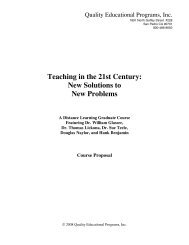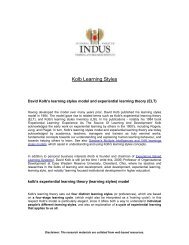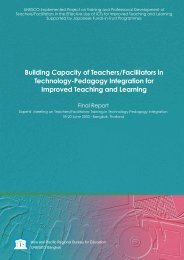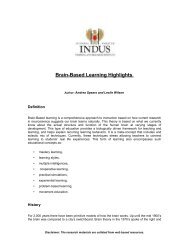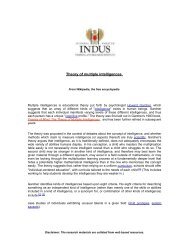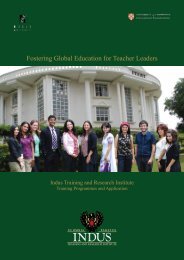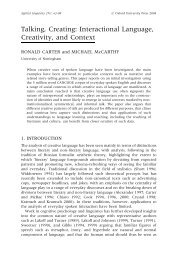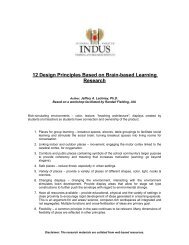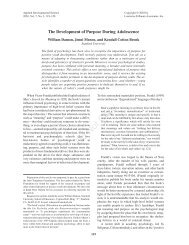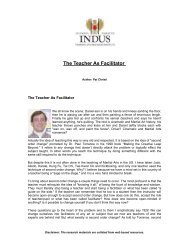Primary Years Programme Making the PYP happen - ITARI
Primary Years Programme Making the PYP happen - ITARI
Primary Years Programme Making the PYP happen - ITARI
- No tags were found...
Create successful ePaper yourself
Turn your PDF publications into a flip-book with our unique Google optimized e-Paper software.
<strong>Making</strong> <strong>the</strong> <strong>PYP</strong> <strong>happen</strong><br />
How are language practices changing (see figure 26)<br />
How is language connected<br />
Language is a complex web of connections, transcending <strong>the</strong> artificial separations of schedules and disciplines.<br />
The language strands are interdependent, with listening, speaking, reading and writing being taught and learned<br />
simultaneously. Language is seen as involving learning language itself, learning about language and learning<br />
through language, and is <strong>the</strong> major connecting element across <strong>the</strong> curriculum, with students focusing not only on<br />
language for its own sake, but also on <strong>the</strong> languages of science, history, ma<strong>the</strong>matics and o<strong>the</strong>r disciplines.<br />
The <strong>PYP</strong> language classroom extends beyond <strong>the</strong> classroom walls, with close connections to <strong>the</strong> central<br />
school library/media centre for research, quiet reading and story sessions, and to o<strong>the</strong>r classrooms for paired<br />
reading activities, shared bookmaking and interviews. The teacher plans in collaboration with o<strong>the</strong>r<br />
classroom teachers and specialists, ESL and foreign language teachers playing a particularly important role in<br />
reinforcing, supporting and extending <strong>the</strong> classroom work.<br />
Language is also a major connection between home and school and, in <strong>the</strong> <strong>PYP</strong> classroom, cooperative<br />
activities are common, to optimize development of all <strong>the</strong> students’ languages. Mo<strong>the</strong>r tongue development<br />
is actively encouraged and supported: bilingual dictionaries are available in <strong>the</strong> classroom, letters to parents<br />
are often translated before being sent home, students are encouraged to use books in <strong>the</strong>ir own language for<br />
project work and, often, mo<strong>the</strong>r tongue classes are part of <strong>the</strong> programme.<br />
There are connections with <strong>the</strong> wider community, <strong>the</strong> host country’s language and literature deserving and<br />
receiving special status, helping students to adjust to and appreciate <strong>the</strong> culture of <strong>the</strong> host country.<br />
The <strong>PYP</strong> language classroom is also connected to <strong>the</strong> broader world through technology: students aim for literacy<br />
in its broadest sense, researching and communicating not only through printed media but also through global<br />
electronic networks, exchanging poetry with a live poets group; collecting first-hand information for a unit on<br />
water from peers in Alaska, The Ne<strong>the</strong>rlands and Western Australia; connecting directly with NASA to access a<br />
vast range of multimedia resources.<br />
76 © IBO 2000



